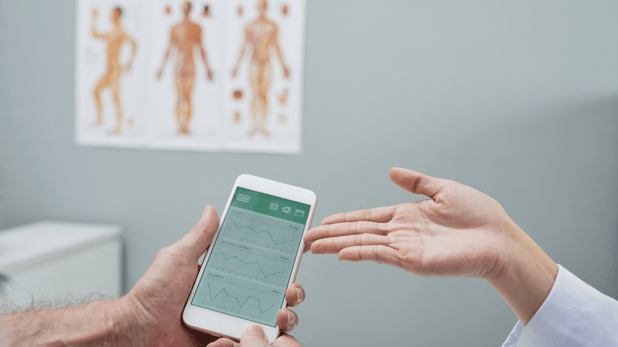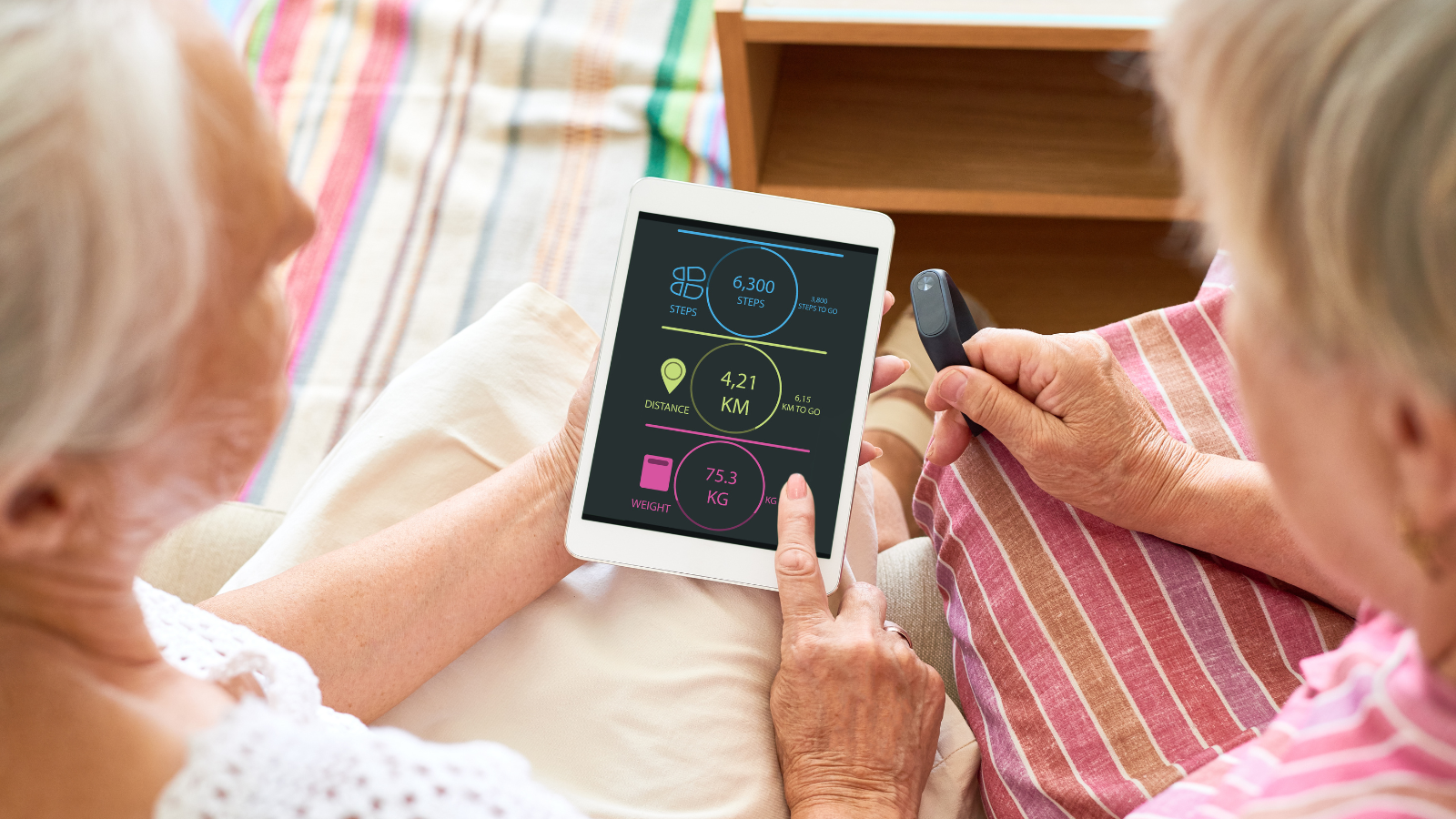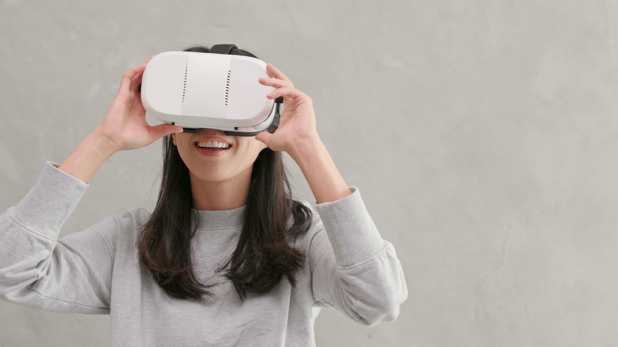Digital Health Trends: The Future of Digital Technology in Healthcare
The Future of Digital Technology in Healthcare
Technology has significantly impacted the healthcare industry, especially in the last three years. The COVID-19 pandemic accelerated the adoption of digital technology, as medical practitioners, health care services, and patients had to adjust to using digital solutions. Digital healthcare technology is used through all aspects of the healthcare system, including in organizations such as hospitals and clinics, care teams, and individual patients (PwC).
What is Digital Technology in Healthcare?
Digital health is defined as using technology to improve healthcare products and the delivery of healthcare services (PwC). Health information technology is transforming the healthcare field as it can be used anywhere, can lower costs, improve efficiency, reach more people, and reduce travel time - both for the patient and healthcare provider (NIHR).
Health technology benefits patients as it can improve their health and well-being (NIHR). For example, telehealth saves patients time as they can meet with their doctor virtually, so they no longer have to stress about commuting to appointments. Patients are empowered to better understand and manage their health conditions through technology such as smartphone applications and wearable devices (NIHR).
Health applications (apps) range from physical to mental health solutions. For example, patients can set physical goals by following exercise routines or tracking daily steps and workouts. To learn more about digital health technology and trends for individuals, visit this blog.

Common health technologies available include (NIHR):
- Smartphone and mHealth applications (e.g. Remote monitoring, diagnostic apps, fitness tracking)
- Wearable devices (e.g. smartwatches and smart clothing)
- Telehealth platforms
- Medical devices (e.g. blood pressure monitors)
With technology, healthcare providers can streamline workflows using software programs to analyze health data gathered from medical or wearable devices. Technology allows medical practitioners and researchers to understand patient healthcare journeys better. Significant technological advancements have improved productivity, provided new healthcare insights, built a better understanding of diagnosis and treatments, and improved patient quality of care (Built In).
The Internet of Medical Things (IoMT)
IoMT is an emerging era linked to the Internet of Things (IoT). IoT is how smart devices (connected to the internet) communicate and exchange data with other smart devices, systems and the cloud (over the internet) (ZDNET). Any device can be transformed into an IoT device if it is connected to the internet and is controlled or transmits information (AWS).
IoMT refers to medical devices and applications that connect to health systems to improve communication and collect data. Most healthcare technology is connected to the IoMT. For example, Telehealth (remote delivery of health services via communication technology) is an example of IoMT, as practitioners can care for patients using mobile devices and applications without an in-person clinic visit (TechTarget).
As technology continues to evolve, it is important to understand how organizations, researchers, and care teams can use this technology to stay on top of digital health trends, better understand diagnoses and treatments, and improve patient care.
Healthcare Technology Trends
Listed below are some digital transformations that are already taking place or are expected to happen in 2023.
Remote patient monitoring (RPM)
RPM technologies have increased over the past three years and continue to do so as healthcare systems look towards remote solutions. RPM uses IoMT to collect health data from a patient’s medical device and transmit the data to organizations and care teams.
RPM is outside of a traditional (physical) clinical setting. For example, blood pressure or oxygen saturation levels can be collected by a patient’s wearable device, such as a smart shirt, and automatically sent to a doctor. This technology can assist in preventative healthcare and save patients time as data can be transmitted from any location (ordr).
A wide range of symptoms and conditions can be tracked using RPM, including (Telehealth; TechTarget):
- Mental illnesses
- Long COVID
- High blood pressure
- Diabetes
- Heart conditions
- Sleep apnea
- Asthma

This technology also plays a significant role in the growing adoption of virtual clinical trials. Technology such as monitoring devices, mobile applications – such as Zamplo Research’s integration with the Zamplo App, and online social engagement platforms are being used by researchers during every step of a trial
This includes patient recruitment, informed consent, communication, measuring clinical endpoints and adverse reactions. According to a 2022 report by Research and Markets, 75% of people prefer mobile clinical trials, and 80% are more likely to participate in trials that use mobile technology (Research and Markets).
Health Applications and Wearable Technologies (mHealth)
The digital health market has been steadily growing worldwide. From 2023 to 2030, the market is predicted to grow by 18.6% (compound annual growth rate) (Grand View Research). This market includes mHealth (mobile health) applications, such as the Zamplo App, which continue to be developed for monitoring, diagnosing, and preventing health conditions.
Applications are being used for telehealth and can potentially be used in virtual clinical trials. Furthermore, there will be an increase in applications focused on connecting patients to their whole health information (Medium). Apps that allow patients to track their health data, better understand their medical condition, and connect with their doctors or healthcare providers are the future of healthcare technology (Medium). These apps empower patients to take an active role in their health, staying informed, and improving outcomes.
Along with an increase in these health apps comes patient-generated health data. This type of data allows healthcare providers and researchers to better understand a patient or participant’s health, habits, and behaviour. It is easy and efficient to capture patient-generated health data through wearable technologies (hands-free smart electronic accessories) (Investopedia).

Wearables can measure and transmit physiological and activity data, including (NIH; Lifewire):
- Early disease diagnostics: heart rate, blood pressure, body temperature, sleep time and quality
- Activity tracking: physical activity, number of steps, calories burned, and active minutes
- Health condition monitoring: diabetes (blood glucose levels), COVID-19 (blood oxygen and body temperature), and UV exposure
Wearable technologies are already being used in the healthcare industry. Its use is expected to increase as more integrations with wearables become available and more specialized wearables are developed.
Artificial Intelligence (AI) and Predictive Analytics
Artificial Intelligence (AI) continues to play a critical part in the development of technology in healthcare. AI is a type of computer science focusing on building machines and systems that can replicate human intelligence when performing specific tasks using machine learning (Built In).
AI is used through various healthcare processes, such as supporting practitioners providing patient services through chatbots and virtual health assistants. One of the main ways AI is being used in the digital health technology industry is through efficient data storage and analysis. There has been a significant shift from using traditional paper and document storage to a more efficient collection of patient-generated health data (Business Wire).
Programs continue to be developed for better patient data storage and analysis; data analysis and recommendations can be conducted using AI (Business Wire). Data analysis and recommendations are being conducted through pattern recognition. AI-powered technology can support precision medicine and personalized therapies based on patient genetics and lifestyle (Digital Authority Partners).
Researchers have been working on and testing AI data analysis models contributing to diagnosis prediction. These AI models have been tested to detect a condition, such as cancer, in its early stages through algorithms, screenings, and test results (NIH).
Diagnosis prediction continues to be a significant AI trend. It is expected to be the main focus for the foreseeable future. There is potential for AI to detect complex patterns and relationships between very different kinds of data – things that humans cannot do (NIH).
Augmented & Virtual Reality
Augmented reality (AR) is an interactive experience that uses displays, cameras, and sensors to combine the real world with virtual content (WebMD). AR is being developed in healthcare to overlay images and data on existing objects or people. An example of this is a nurse using AR to see the veins in a patient’s arm, making it easier to draw blood and saving time (WebMD).
AR is beginning to be used in the operating room as well. Various neurosurgeons from Johns Hopkins University have used AR during surgeries on living patients. In one instance, a surgeon used an AR headset with a see-through eye display that projected images from X-rays and CT scans, facilitating spinal fusion surgery (John Hopkins Medicine). With this technology being more readily available in the future, medical practitioners will be able to see broken bones, brain tumours, and health records without needing to look away from the patient (WebMD).
Virtual reality (VR) is also an experience that uses technology to improve training, efficiency, precision, and quality of care in healthcare. The difference between AR and VR is that the latter is an immersive experience that creates an entirely new world using special electronic equipment (WebMD).
VR can be used throughout various instances, including surgical training, where surgeons can become more comfortable completing a procedure using a simulator (MassChallenge). VR can also be used in the treatment of mental health to help improve outcomes. This technology is used to help patients overcome fears and phobias, including fear of flying, heights, public speaking, and PTSD (Columbia University).

More AR and VR technologies are expected to be developed for healthcare as there is a 30.7% expected growth rate of AR and VR in healthcare from 2017 to 2025 (MassChallenge).
Privacy and Security
As digital technology adoption has increased, so has the quantity of data generated by patients. Healthcare organizations have access to patient-generated data, which is used to better understand pain points and unmet needs (McKinsley & Company).
As healthcare evolves with technology, health information is increasingly collected through apps, wearables, AR, and AI. Privacy and security breaches also increase. In 2021, more than 550 organizations experienced a data breach. Furthermore, 40 million people in the United States were affected by security breaches and had their health information leaked (The Verge).
Patients have begun to think more about their data rights due to the rise of virtual healthcare during and after the COVID-19 pandemic (JABIL). Surveys have shown that 73% of individuals believe they should have the right to their health information and choose what personal health information can be collected for purposes beyond treatment (Accenture). Patient safety and security requirements will likely increase as individuals keep pushing for privacy.
Due to this, health organizations have begun to prioritize privacy and security above all else (Titus). For example, organizations have implemented multifactor authentication as it decreases the likelihood of a cyber-attack (onelogin). Multifactor authentication requires people to provide two or more verification factors to log in to a product or service (onelogin). Some organizations are also changing their privacy policies to only store necessary customer information (no personal information) (Security.org).
Looking Ahead
Looking ahead to the future of technology in healthcare, it is expected that these trends will evolve as the Internet of Medical Things (IoMT) expands. Remote Patient Monitoring (RPM) will continue to grow as an alternative to traditional clinical settings and pave the way for virtual clinical trials.
More digital health apps, wearable types, and person-centered solutions will continue to be developed with the support of Augmented Reality, Artificial Intelligence, and Virtual Reality. Lastly, privacy and security are expected to be at the forefront of patient healthcare and organizational decisions.
As technology continues to evolve, it is essential to understand how organizations, researchers, and care teams can use this technology to better understand diagnosis and treatments, streamline research, and improve patient quality of care.
To learn more about how innovative technology such as Zamplo Research (an electronic data capture platform) can integrate with Zamplo App (a connected health platform), visit https://research.zamplo.org/integration.
Share this
You May Also Like
These Related Stories
%20(1)-2.png?width=515&height=680&name=Updated%20Blog%20Images%20(Small%20Hero%20Banner)%20(1)-2.png)
Patient-reported Outcomes in Digital Health
-1.png?width=515&height=680&name=Updated%20Blog%20Images%20(Small%20Hero%20Banner)-1.png)
Benefits of A Connected Health Platform Integration
-Feb-07-2024-09-17-50-7150-PM.png?width=515&height=680&name=Updated%20Blog%20Images%20(Small%20Hero%20Banner)-Feb-07-2024-09-17-50-7150-PM.png)


No Comments Yet
Let us know what you think